Trip to Nepal
October 2006
Day 8 - Chame to Pisang
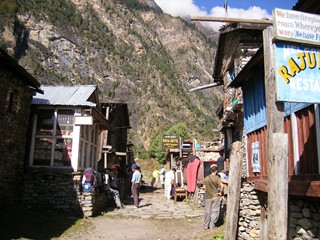 |
This is the small town of Bhratang,
about halfway between Chame and Pisang. It's easy to see that this
village is setup for the tourist trade. What it does during the
winter and the rainy season is not apparent. |
|
| I can
remember that it was a spectacular day of lots of sun and the smell of
pine trees. The trail was fairly level for the most part, rising
from 2700M in Chame to 3165M in Lower Pisang, maybe 3300M in Upper
Pisang. |
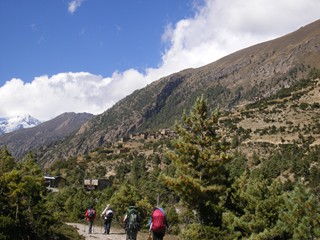 |
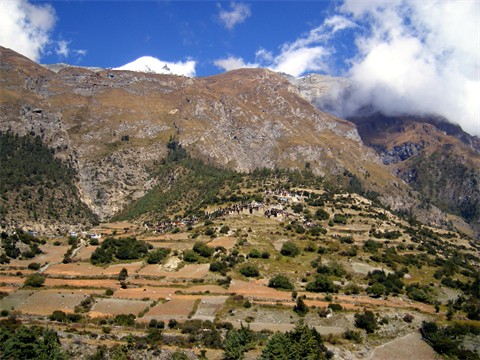 |
As we got closer, we could see the
town of Upper Pisang and the family plots laid out below the town.
The redder areas are buckwheat. |
|
|
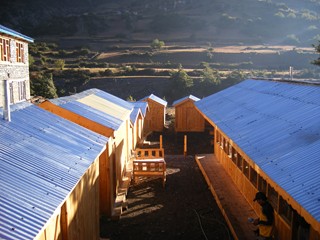 |
This is Pisang Peak, a 6000M mountain. We
were walking up from Lower Pisang to Upper Pisang to see the town.
We stayed at a Grapes of Wrath type lodge in Lower Pisang, but Upper
Pisang had the beauty and the views. |
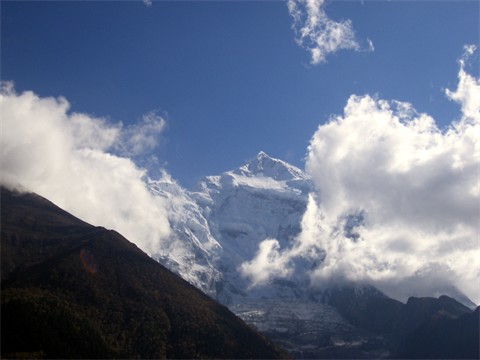 |
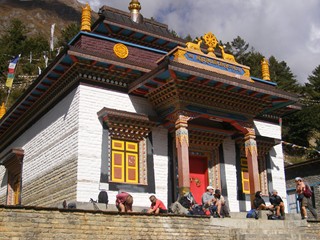 |
This was taken from a Buddhist gompa at the top of
Upper Pisang, looking up at the ceiling. The doors were closed and a
dozen trekkers were hanging around on the steps catching rays and
looking at the views. Ram asked if I'd like to go in, and he found the
caretaker of the place and persuaded her to open it up. Beautifully
painted. We saw painters at work on a new gompa later on the trip, and
they sit on elevated boards with their arms over their heads for long
periods while meticulously placing brushstrokes. |
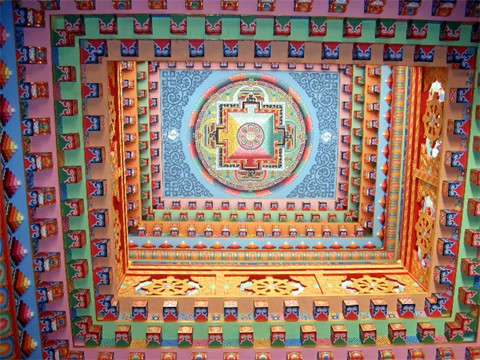 |
|
|
View from Upper Pisang, in front
of the Buddhist gompa. >> |
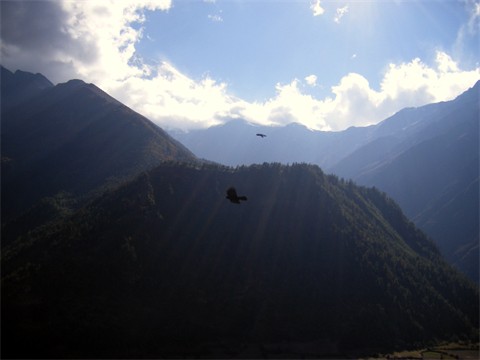 |
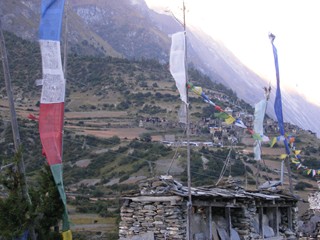 |
<< Another view back uphill to
Upper Pisang. |
| Two guys carrying
firewood back to town. There's an effort to get villagers to
switch more to Kerosene in order to keep deforestation under control.
I'd say that the effort is not going very well. When you order
food at the tea house, you need to order it two hours ahead of time, so
that they can maximize the use of their wood by grouping the foods by
their heating needs. |
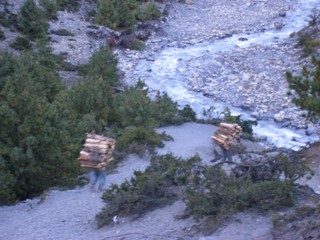 |
I would definitely recommend staying in Upper Pisang
over Lower Pisang. First of all, the views are so much better in the Upper
area. Second of all, there are two treks from Pisang to Manang, the next
major village, and the upper one is spectacular whereas the lower one is good
but doesn't have that extra drama.
I never learned Nepali; everyone learns Namaste
(pronounced more like NaMaaaStay), which is the generic greeting meaning
something like 'my spirit acknowledges and greets the spirit iu you.'
But most of the Nepalis who make at least a partial living from tourists learn
English. As do most of the other Westerners on the trails. But I
pretty much gave up having a real conversation with most Nepalis. Sample:
We're walking on what appears to be a logging road. Me: "Is this a logging
road?" Him: Blank stare. Me:"Logging road? Cut trees?"
Him: "Yes, is road." Me: "Road for cars? buses? trucks?"
Him: Blank look. Me: "Wide road - what does it carry?" Him: "Yes,
white road." Me: "Could I drive on this road?" Him: "Yes, take
taxi." This is followed by a hearty laugh and the conversation is over.
Day 9-10 - Pisang to Manang